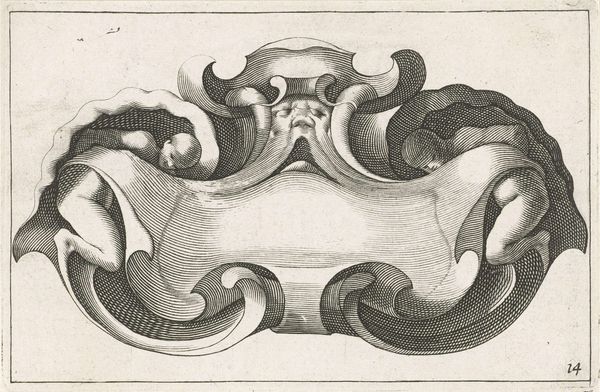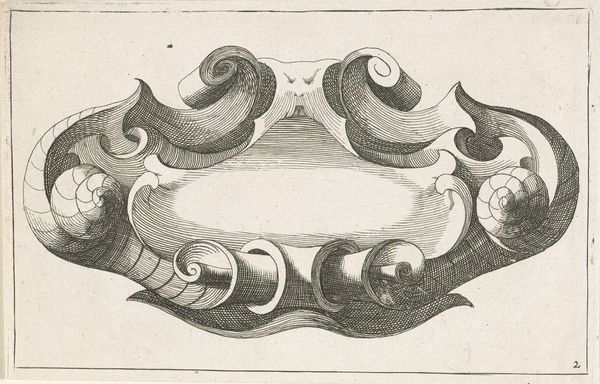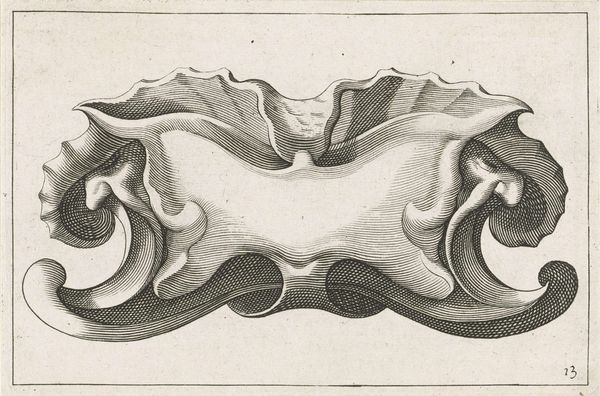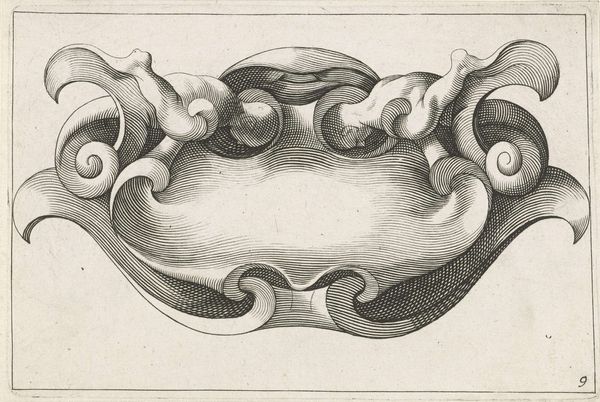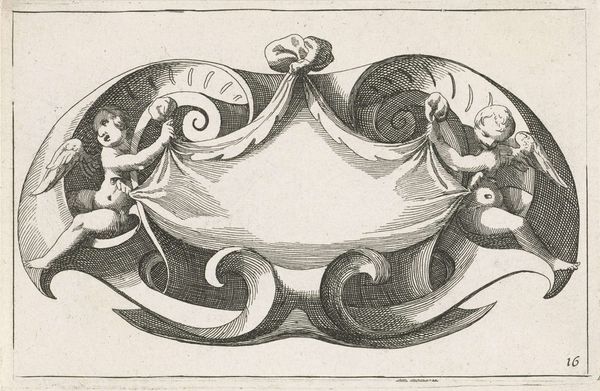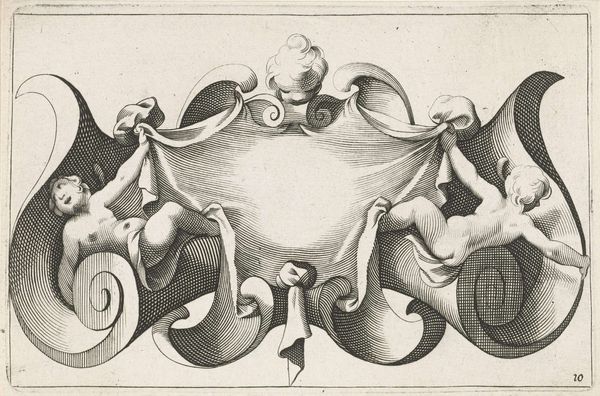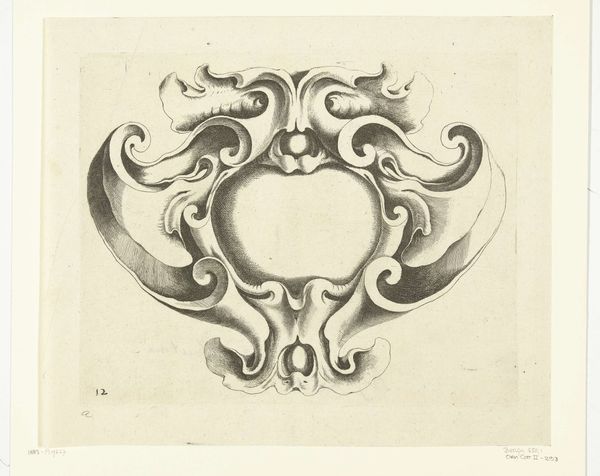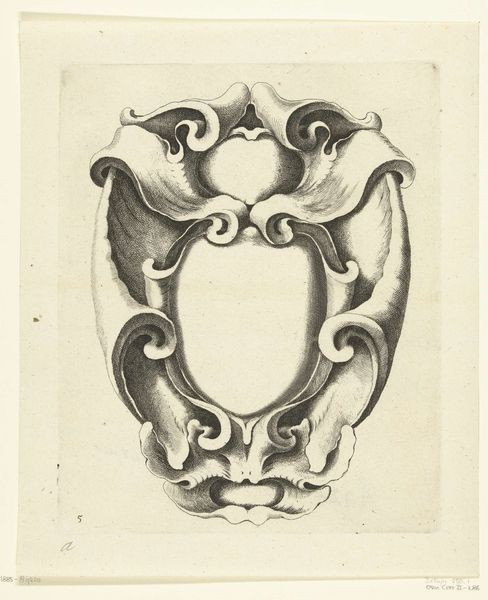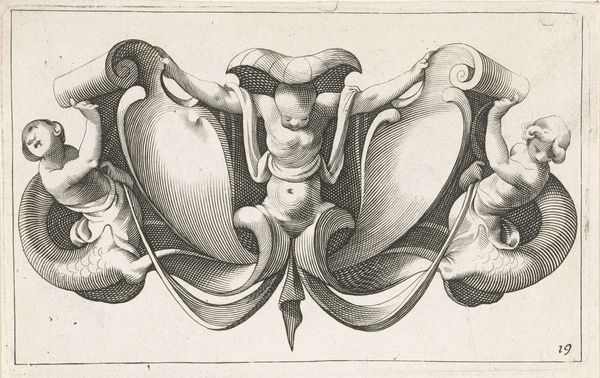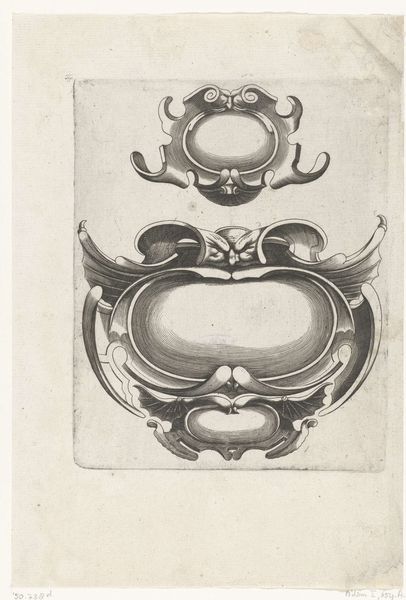
engraving
#
allegory
#
baroque
#
old engraving style
#
form
#
line
#
engraving
Dimensions: height 101 mm, width 153 mm
Copyright: Rijks Museum: Open Domain
Editor: Here we have "Horizontale cartouche met twee kinderhoofden", an engraving from between 1657 and 1685, currently housed at the Rijksmuseum, by an anonymous artist. I’m immediately drawn to the elaborate, almost theatrical framework and the way the cherubic faces are integrated. It feels very ornamental, but also perhaps functional. What's your interpretation of its role within the art of its time? Curator: The cartouche itself, especially during the Baroque period, functioned as more than just ornament. It served as a visual signifier of power and knowledge. Think about where these images would have been displayed: often as framing devices in prints, or architectural features signaling refined taste and authority. The placement of cherubs, symbols of innocence and divine blessing, further elevates the implied message. Do you see how the very medium—engraving—allows for mass production and dissemination of such messages? Editor: Yes, I see what you mean. It's not just a pretty picture; it's communicating a status, a kind of cultivated sophistication, accessible to a broader audience through print. So, who might have been the target audience for such an image, and how would they have engaged with it? Curator: Likely, the prints using this cartouche would have circulated among wealthy merchants, emerging middle classes, and learned individuals who sought to project an image of cultured refinement. They’d be commissioning prints framed with elements such as this to show belonging. This isn’t simply aesthetic; it's about cultural positioning. It underscores the interplay between art, social aspiration, and the burgeoning print market of the time. Editor: It’s fascinating to see how even seemingly decorative elements can reveal so much about the social and cultural landscape of the era. Curator: Indeed. By examining art in relation to its historical context, we understand how images participated in shaping perceptions and values. There's much to uncover even within what appears to be mere ornamentation.
Comments
No comments
Be the first to comment and join the conversation on the ultimate creative platform.
